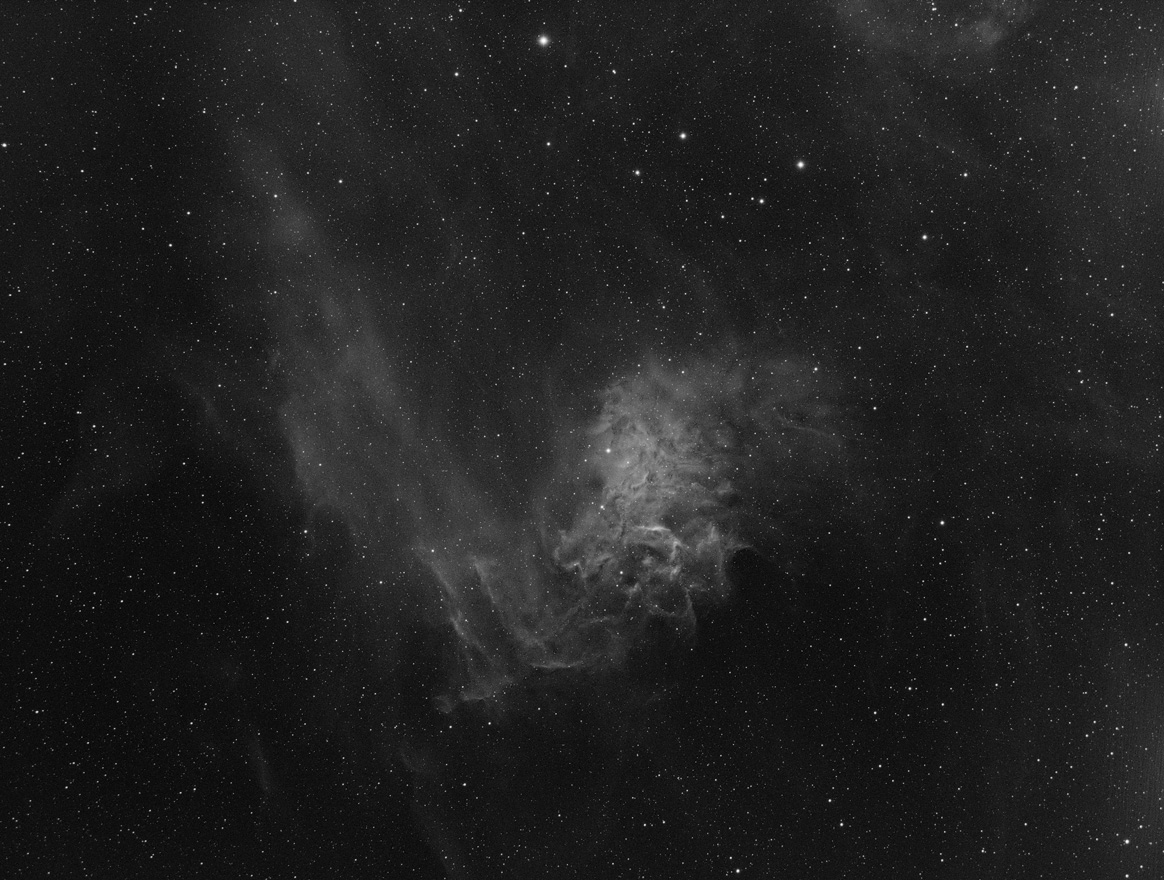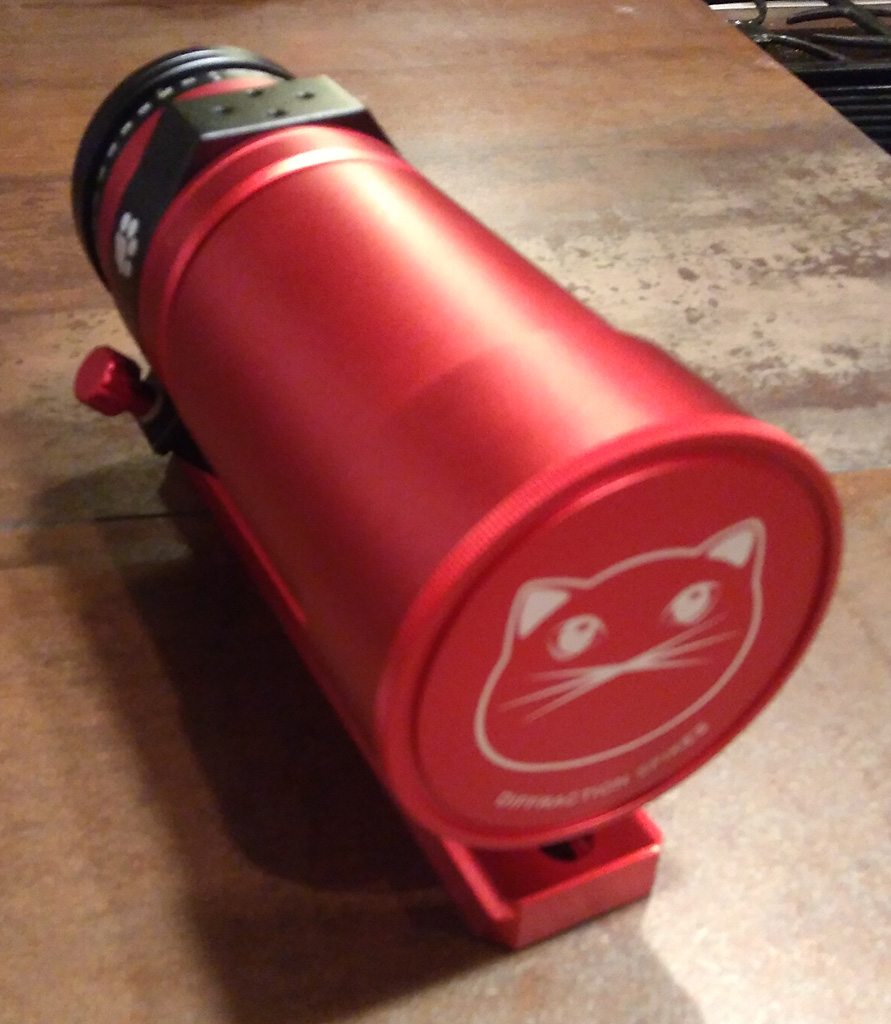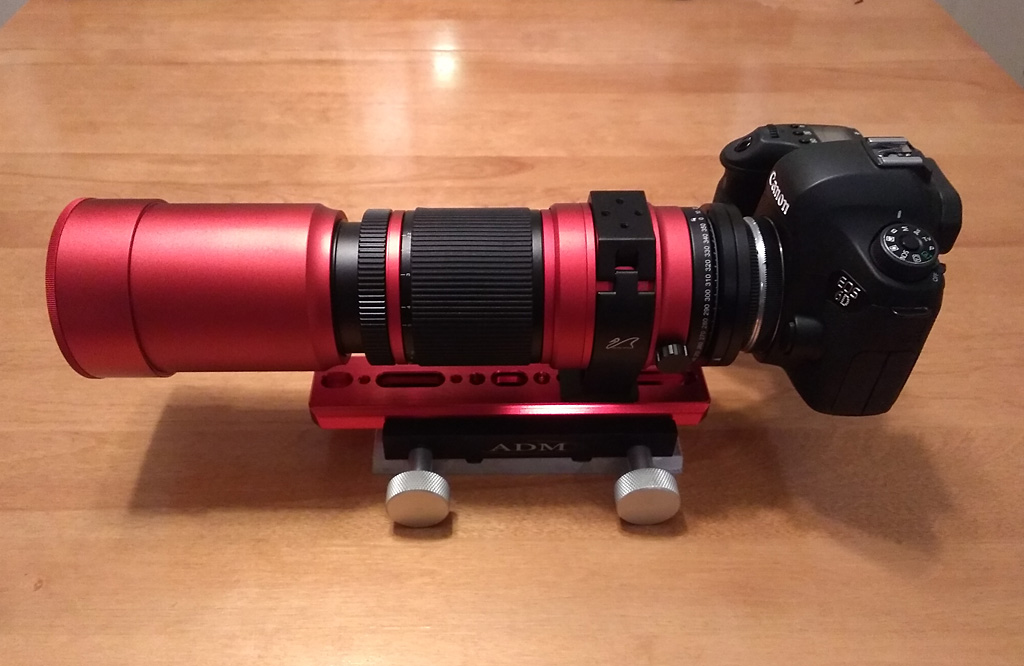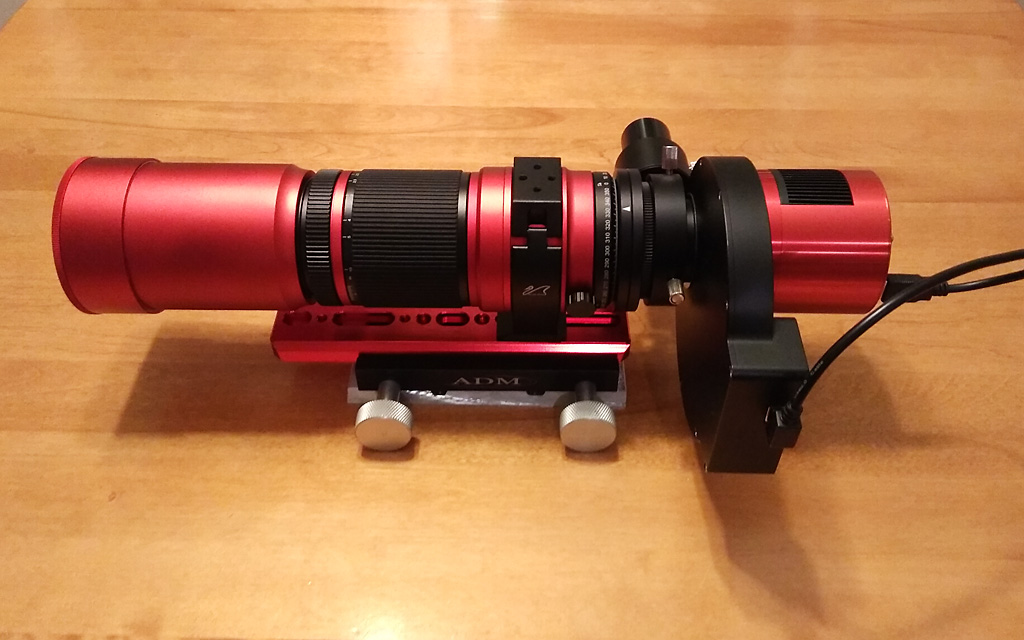Above is a photo of IC405, the Flaming Star Nebula, in hydrogen-alpha. This was captured as part of a test of a new telescope, the Stellarvue SVX80T-3.0. Although this image looks pretty good (and I particularly like this framing of the object), I found some technical issues with the optics, and spent a good portion of the last month doing further testing and analysis. I was able to improve it, and am on the verge of deciding that I was too critical in my first analysis. It’s a very nice ‘scope overall, and the part I’ve been unhappy about is an optional accessory, a focal reducer. Focal reducer effectively make a telescope lower magnification (shorter focal length) and faster (lower focal ratio), so the intent here was to get reasonably wide images with my astro-cameras. I can also put my Canon 6D full-frame DSLR on this ‘scope without the reducer and get an even wider field of view, but the DSLR camera is much more restrictive in what you can do with it.
I’ll be leaving for an extended vacation in southern California soon, as I did last year. To be sure I had a workable wide-field system for this time I recently purchased an even smaller and much less expensive telescope, the William Optics RedCat 51:
Sorry for the fuzzy picture, but it was the only one I have showing the cute logo on the dust cap. The RedCat 51 is sort of a hybrid; part telescope and part camera lens. Like most camera lenses it has a helical focuser, meaning that you twist the barrel to adjust the focus. But it has no aperture adjustment, like most telescopes. It is a petzval design with 4 elements, producing a focal length of 250mm at f/4.9, with (hopefully) a very flat field over a full-frame sensor. In the above photo the dew shield (sun shade in camera lens terminology) is turned around for compact storage. Here it is with the dew shield in place and Canon 6D attached:
The black and silver parts underneath it are not part of the RedCat, but an adapter needed to mount it on a larger telescope mount. In fact, I have to modify it a bit to get the ‘scope/lens further away from the mount. The Stellarvue ‘scope comes with such “riser blocks” already installed. The risers are needed because with short telescopes like these the camera ends up not far enough away from the mount head, so you can’t rotate the camera. This is especially true when you have a big old filter wheel sticking out on one side and a guide camera on the other:
Notice that both the ‘scope and camera are red? Not so much of a coincidence – it’s just the popular color in astrophotography these days (my mount is also red).
I certainly hope to be able to do some astrophotography in California, and I will definitely have internet access (most of the time), so maybe my next post here will not be such a long wait! But in case I don’t get a chance before then, please have a Merry Christmas, or whatever you celebrate this season!



